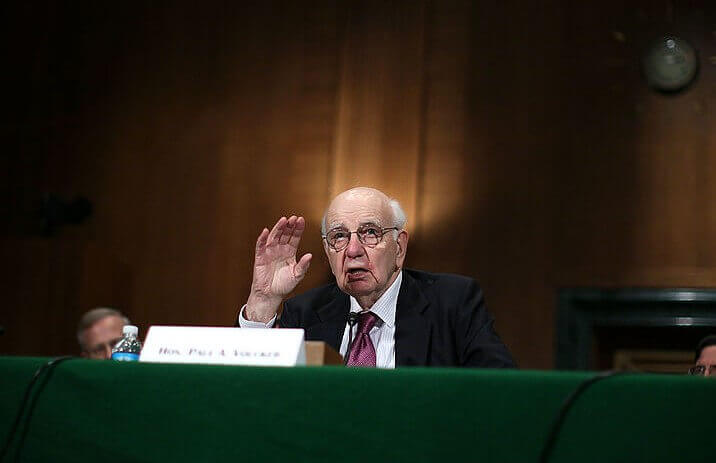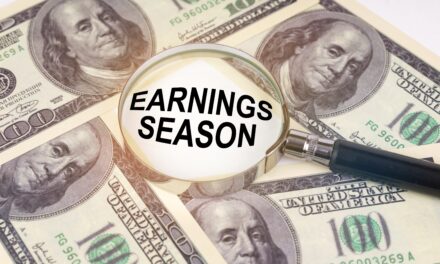Word reached us Monday morning that Paul Volcker, chairman of the Federal Reserve during the Carter-Reagan years, was dead.

RIP Paul Volcker, the last honest Fed chair
A shame. We had just decided to contact him in the hopes of arranging a private conference – as we did with former Fed chair Alan Greenspan a few years ago.
We wanted to know what he really thought… of the Fed today, of negative interest rates, of uncontrolled debt. Most of all, we wanted to know if he had any regrets…
…about launching the funny-money system in 1971…
…or about saving it in 1980.
But now, it’s too late. The dead hold their peace. We have only the public record – just like everyone else.
So let’s look at the record… and offer a salute and a warning: Even the best public servants can make a damned mess of things.
Last Honest Chairman
Volcker was the last honest Fed chairman. He said what he thought. He did what he said he would do. No mumbo-jumbo about “inflation targets,” the “wealth effect,” or the economy being “in a good place.”
When Volcker spoke, he meant what he said. And when he vowed to end stagflation in 1980, investors should have paid attention.
But back then, even we didn’t believe it. We had worked in Washington for the previous seven years and were already in the spirit of D.C. degeneration. When a public official made a claim, we assumed it was a lie. And when he officially denied something, we knew it was true.
Already consumer price inflation had risen over 10%; we expected it to go even higher. Gold rose to $800 an ounce — 21 times its 1971 price. Popular commentators, such as Howard Ruff, predicted that it would keep going up… even to $5,000 an ounce.
Once an inflationary spiral gets underway, there’s no stopping it. At least, that was the thinking in conservative/Austrian economic circles.
By taking gold out of the dollar system, Milton Friedman, Paul Volcker, and the Nixon administration had opened the gates of Hell. Now, it was “Inflate or Die.”
Either the feds continued with their EZ-credit, big-spending ways. Or, the economy would suffer a recession, which would be politically unacceptable.
‘Saved’ by the Fed
Or so we thought. But we didn’t know Paul Volcker. And our thinking didn’t include a “save” by the Fed chairman.
In January 1980, after nearly a decade of the new paper money system, stocks were dissed everywhere… You could buy all 30 Dow stocks for just 1.3 ounces of gold. As for bonds, they were mocked as “certificates of guaranteed confiscation.”
Volcker had pledged to turn it around, to beat inflation. He gave investors the “Volcker shock” treatment, putting the Fed’s key rate at 20%. And it worked. Inflation, as measured by the Consumer Price Index (CPI), was over 13% for 1980. Three years later, it was under 4%.
Still, investors were slow to get the message. The Dow was around 850 in January 1980. If investors had seen what was coming, they would have gone all-in… driving up stock prices quickly. Instead, they loitered and lollygagged, not sure what to do.
In nominal, post-1971 dollars, the Dow was at about 850 in July 1982. It took almost two years before the stock market began its historic rise.
(The old money saw the change immediately. By July 1982, stocks were already up 75% in pre-1971 dollars at $35 to an ounce of gold.)
Inflate-or-Die Economy
But investors had good reason to hesitate. By 1981, the Volcker shock had created the worst recession since the Great Depression.
Can you imagine what would happen today if the Fed put its key rate at 20%… and house-buyers found themselves paying 18% on their mortgages?
Volcker was attacked by Democrats and Republicans alike. His effigy was burned on the Capitol steps. Ted Kennedy proposed abolishing the Fed. At any moment, it looked as though President Reagan might crack, and cut him loose.
But Reagan backed Volcker. And Volcker didn’t flinch. It was an “Inflate-or-Die” economy. He didn’t merely let it die, he pressed the pillow to its face.
Funny-Money Standard
Volcker had good reason to want to stop stagflation. He was partly responsible for it. Business Insider:
During his time in the Nixon administration, Volcker served as undersecretary for international affairs. As part of the role, Volcker helped the US move off the gold standard, which redefined the international monetary system.
Volcker had helped to build the new money system, in other words. By 1980, the monster had already done to the U.S. economy more or less what the Japanese had done to Nanking. The new paper dollar system was in shambles… and Volcker was the only person who could save it.
He did what he said he would do. And that was a shame, too. For now we see that Volcker was fighting a battle that should have been lost, not won.
By reestablishing the pseudo-integrity of the paper money system, Volcker actually set the stage for an even bigger disaster.
Game Over
Did he have any doubts? Yes. As early as 1994, Volcker said:
If the overriding objective is price stability, we did better with the nineteenth-century gold standard and passive central banks, with currency boards, or even with “free banking.”
A quarter century later, the game was over for Paul A. Volcker. Taking a final look at the scoreboard, he must have seen a big win.
But we wonder… Did he finally regret his role, either for establishing the funny-money standard in 1971… or saving the system in 1980?
We’ll never know. But even if Volcker didn’t regret it, we surely will.
Stay tuned.
Regards,
Bill
• This article was originally published by Bonner & Partners. You can learn more about Bill and Bill Bonner’s Diary right here.




